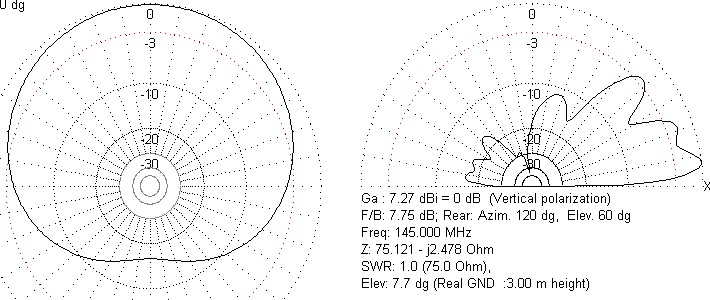
The Hentenna constructed and installed for 2 metres radiated approximately North-East and South-West. Behind the QTH here is a 200 foot limestone cliff in the North-Westerly direction so it was deemed only necessary to have a unidirectional aerial pointing towards the South East to obtain reasonable overall coverage. Once again the idea of forcing a Yagi up the Christmas tree was vetoed and I decided to try a Moxon instead. Many amateurs have made Moxon aerials for HF, they seem to be very compact with good front to back characteristics so why not for 2 metres as well?
The result shown here was made from 15mm copper tube. The dimensions are not as critical as the Hentenna although dimensions are again dependent on the tube or wire diameter. The principal variable, for matching purposes, is the spacing between the radiator and reflector, set here at 35mm. The 15mm tube has dowel inserted to space the elements and, once the spacing is correct, a little waterproof glue added and a plastic spacer to keep the dowel from rotting in the wet. The coax has a little sleeving or spiral binding and is tie-wrapped to the centre of the reflector section of the aerial.
Once again the coax was 75ohm satellite cable, this has a generous copper inner, semi-airspaced polythene dielectric and aluminium foil outer with copper braid outside this. The PVC outer is very tough but the downside is the diameter of 6.5mm. (Naturally the cost is low, only about £16 for 100 metres). The aerial was attaced to a PVC tape-wrapped bamboo pole from the centre of a carpet roll and literally shoved up the tree, attached by tree-ties and polypropylene rope
The length is 734mm, width (varies with spacing) 305mm, spacing 35mm in this case, radiator arm 110mm, reflector arm 160mm, a small rectangle of SRBP with brass screws through completes the construction.